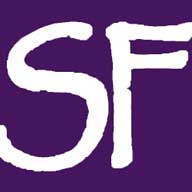
When the immigrants from mainland Spain arrived, they introduced the industrial way of leather tanning. The first references to this activity are an agreement dated 21st January 1607 in which the territory of Fuerteventura was split in two areas for the collection of skins and the preparation of leather goods. The practice stayed very much the same till the 1950's due to the limited resources on Fuerteventura to further develop the leather tanning technology. Water was a crucial element in the tanning activity and was extracted from the underground by hand, windmills and later by engines.
The major source for skins and leather was the masculine goat. End product was mostly footwear. The skins of female and baby goat were used to make (food or liquid) containers. Most of the produce was kept on the island for local use, but some was exported to neighbouring islands. The tanning centres were around Betancuria and Pájara.
Michel
Source:
"Las tenerías en Fuerteventura" by A.Perera Betancor & A. Rodriguez Rodriguez – 1995 – Depto. de Artesanía – Cabildo de Fuerteventura.
Wikipedia
